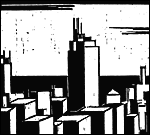Lillian Ross, Picture (London: The Non-ficiton Book Club, 1952) Fiftieth Anniversary Edition published in paperback June 2002 by Da Capo Press. Longtime New Yorker writer Lillian Ross set out in 1950 "to learn whatever I might about the American motion-picture industry" as she states on the first page of this commanding portrait of movie making. Ross' declaration of intent is bound to seem a tad coy upon reaching the book's end, though. Covering the making of John Huston's The Red Badge of Courage (adapted from the classic Stephen Crane novel about the Civil War) by following the "admired, rebellious, and shadowy" director from his initial talks with the studio (MGM) and the distributor until the ignominious end (the movie was a commercial flop and aesthetically compromised), Ross offers up a knowing assessment of that perennial Hollywood tug-of-war, art vs. commerce. "The only picture I ever made that seems as though it's going to be marked down simply as a box-office failure is The Red Badge of Courage," Huston told the film's producer after all was said and done. "And I thought that was the best picture I ever made." One of the virtues of the book for any reader, but certainly for journalists wanting to know more about Hollywood, is that although Hollywood is frequently portrayed as a place where craven studio executives and aesthete directors duke it out for control of what ends up on the screen, that battle is usually more nuanced than popular imagination would have it, and the nuance is always present in Picture. At one point, Huston ends up agreeing with the producer's specific criticism of the way a battle scene has been edited. But later in the book, that same producer writes Huston a letter explaining why the studio decided to add voice-over narration to clarify plot events for the viewer, a strategy Huston was opposed to. Journalists who already know that Picture has been ranked one of the top 100 works of 20th-century journalism, has been called the best book on Hollywood by Newsweek, and are familiar with Ross' sometimes forbiddingly stripped-down style should forget about the stultifying halo of classicism surrounding the book. In addition to its educational benefits (Ross also provides a good lesson in how to unobtrusively insert oneself into a non-fiction narrative), Picture is a great read. For insight into the writing of Picture, see Ross' Reporting Back: Notes on Journalism (Counterpoint Press, 2002), where she makes comments about Picture, among other of her titles. MORE: “Rules of Reporting” Ross’ post-9/11 thoughts from Slate.com |
 |
|||||||||||||||||||||||||||